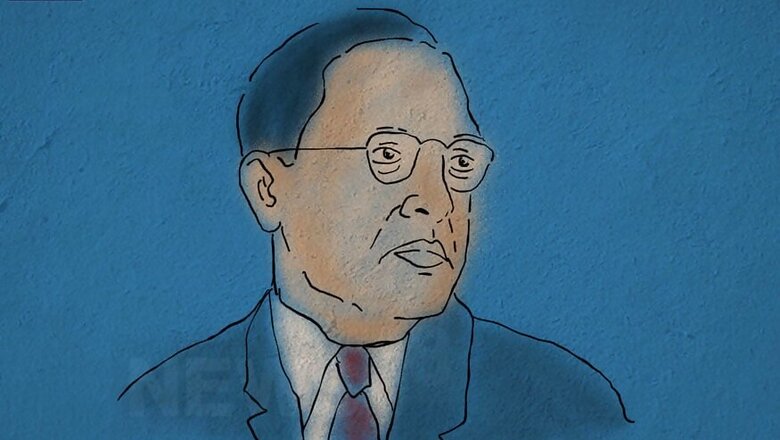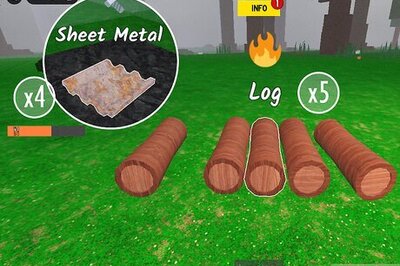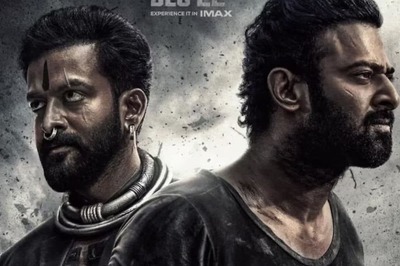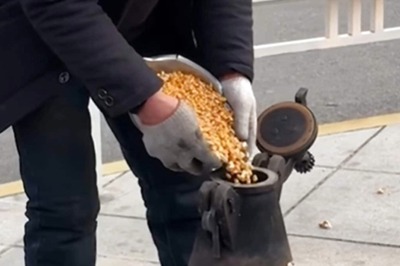
views
Before understanding the contribution of Sangh in dealing with the question of caste in India, let us look at another cadre-based organisation and understand how and where it failed.
The Marxists started their work in this country by working with the downtrodden, oppressed, and deprived sections of the country. To work with the poorest of the poor was their self-professed political objective.
They reached out to the masses and began their training by ‘de-classing’ them. Marxists had to learn not to belong to any specific ‘class’ of the society. And through their work they were undoubtedly able to gather a substantial Dalit following over the years.
Kerala is a good example. Here the Ezhava community, which had faith in Narayana Guru, over time started believing in the Left as well. Together with the communists, the Ezhavas challenged the authority of the upper-caste ‘Nair’ community, patronised traditionally by Congress.
But Ezhavas warmed up the idea of communists not because they had specifically set out to support the Dalit community. The communists got their support in their larger cause of class-struggle.
Let’s take another example. Financially, the most deprived in India are landless labourers. Their condition is abysmal when compared to the richest section of the society. Marxists will not tire of emphasising this class divide and will repeatedly promise their support to this most deprived section of the society. But this is only half the truth.
The other half is that 70% of these landless labourers are Dalits. Being a Dalit landless labourer is worse than being a just landless labourer. This is a distinction that the Left has never understood or acknowledged.
Marxists are one of the many cadre based organisations in this country that have always evaded the question of caste in our society.
The financial disparity — the divide between the rich and the poor — has only come about in India in the last few decades. But the social divide in our society — the hierarchy of caste — is a millennia old problem.
Burying one’s head in sand and pretending that this huge social disparity doesn’t exist will not yield anything. Marxists never understood this. ‘De-classing’ people was not enough.
Sangh has its own understanding of this issue. Since everyone is born from the same God, we believe, we cannot consider one inferior to the other. It was at our behest that Hindu saints, following the Meenakshipuram conversions, had proclaimed.
(Thousands of Dalits converted to Islam in Tamil Nadu’s Meenakshipuram in 1981)
“Hindavaha Sodaraha Sarvey
Na Hindu Patito Bhavet
Mama Deeksha Hindu Raksha
Mama Mantra Samaanata
(All Hindus are brothers
No Hindu is inferior
My duty is to protect Hindus
Equality is my motto)”
This is the training that we received in our Shakhas. The very social reform that we have been bringing to this country deals with the issue of caste on a fundamental basis.
Treating the fellow swayamsewak as a brother is one of the initial principles taught at the Shakhas. When we eat together at the Shakhas we don’t know which caste the person sitting next to us is from. Similarly, when we ‘fall-in-line’ we stand in ascending order of our heights not our castes. Swayamsewaks are taught not to believe in untouchability or in caste hierarchies.
This is why Mohan Bhagwatji has called for ‘One temple, One well, One crematorium’ in every village. Sangh has, in fact, been calling for this since 1940.
I was once in conversation with Jayprakash Narayan and our subject turned towards the topic of communal politics. He accused everyone in the Sangh, including me, of being communal. When I asked him the reason, he said none of the 1200 pracharaks in the Sangh were Muslims.
When I asked him in return how many Muslims he had in his organisation — Sarvodaya — he was baffled to find out the number. Only 2!
“Sure we may be communal, but the “secular” principles of two people in this country — Gandhiji and you — cannot be questioned I think. So tell me why do you have so few Muslims in your political organisation?” I asked him.
When he couldn’t answer, I told him that to understand our intentions, objectives and achievements, we needed to look beyond statistics and numbers.
At many places Dalits have risen through the ranks in Sangh. At some places they are also serving as Prant Prachaaraks. But we don’t go out of our way to find out their numbers. We don’t promote an organisation like this. Social reform is a silent, time taking exercise that requires lots of patience.
This is why in 1940s Ambedkarji was also associated with the Sangh. He used to meet and be in touch with several members of the Sangh. Among others, he was especially close to Dattopant Thengadiji.
He had told Dattopantji, “I know about the work and discipline of the Sangh. I am also pleased with your work. But the number of Shakhas you are running and the manner in which you are expanding the Shakhas is not suitable for me.”
He had told Dattopantji that Sangh’s work will put his social movement back by several years and this was unacceptable to him.
“I want to give this community some direction within my own lifetime. I want to fight not just the system of varna, through which we are abused regularly. I also don’t want us to fall prey to religions born outside the country.” This is a conversation that Ambedkarji had with Dattopantji that he has mentioned in his book titled ‘Babasaheb Ambedkar’.
The agony of Ambedkarji, who came from an oppressed caste, was understandable. It is important to understand it and not to denigrate it.
In 1980s Balasaheb Deoras was presiding over a meeting in which a proposal of reservation was forwarded. Many in the senior ranks were confused about this topic. To be able to think beyond one’s caste and class is not easy after all.
Balasaheb told all the people there, “Forget your castes for a moment and then think of this issue. Try to imagine yourselves living in the environment, the surroundings in which the people whose lives will be affected through this change, live. First live that experience and then decide whether reservation is or isn’t a useful tool to get out of those surroundings.”
The president’s resolution was passed without a comment.
Balasaheb had once made another interesting remark which has been my guiding principles on this topic.
When the movement for reservation was going strong in Bihar in '78, Balasaheb made two remarks — “Those who demand reservation only on basis of caste are suffering from casteism, and those who demand reservation only on the basis of financial condition are ignoring the unfortunate, thousand year old history of our country.”
An ideal balance needs to be struck between social justice and social harmony. The Shanti Bhushan formula, which was implemented in Bihar with cooperation from Karpori Thakur and Chandra Shekhar, is a suitable model for this.
Golwalkarji had said that the misfortune of our times is that political parties for their benefit have kept on boil the issue of casteism constantly. When the flames begins to flutter, more timber is brought and the fire burns bright again.
The unfortunate manner in which some political parties have, in the name of benefitting the oppressed classes, kept burning the fires of casteism has been a big impediment in social reform.
It is true that our efforts haven’t touched all sections of the society in a way we would like. I have to admit that we have lacked here. A lot of poison is also being given by casteist parties.
But as my mentor used to tell me, “Dheere dheere jaldi chalo.” We have to walk fast in order to catch up with the times, but not pace ourselves beyond control.
(K N Govindacharya is a former RSS idealogue. Views are personal)
— As told to Suhas Munshi



















Comments
0 comment